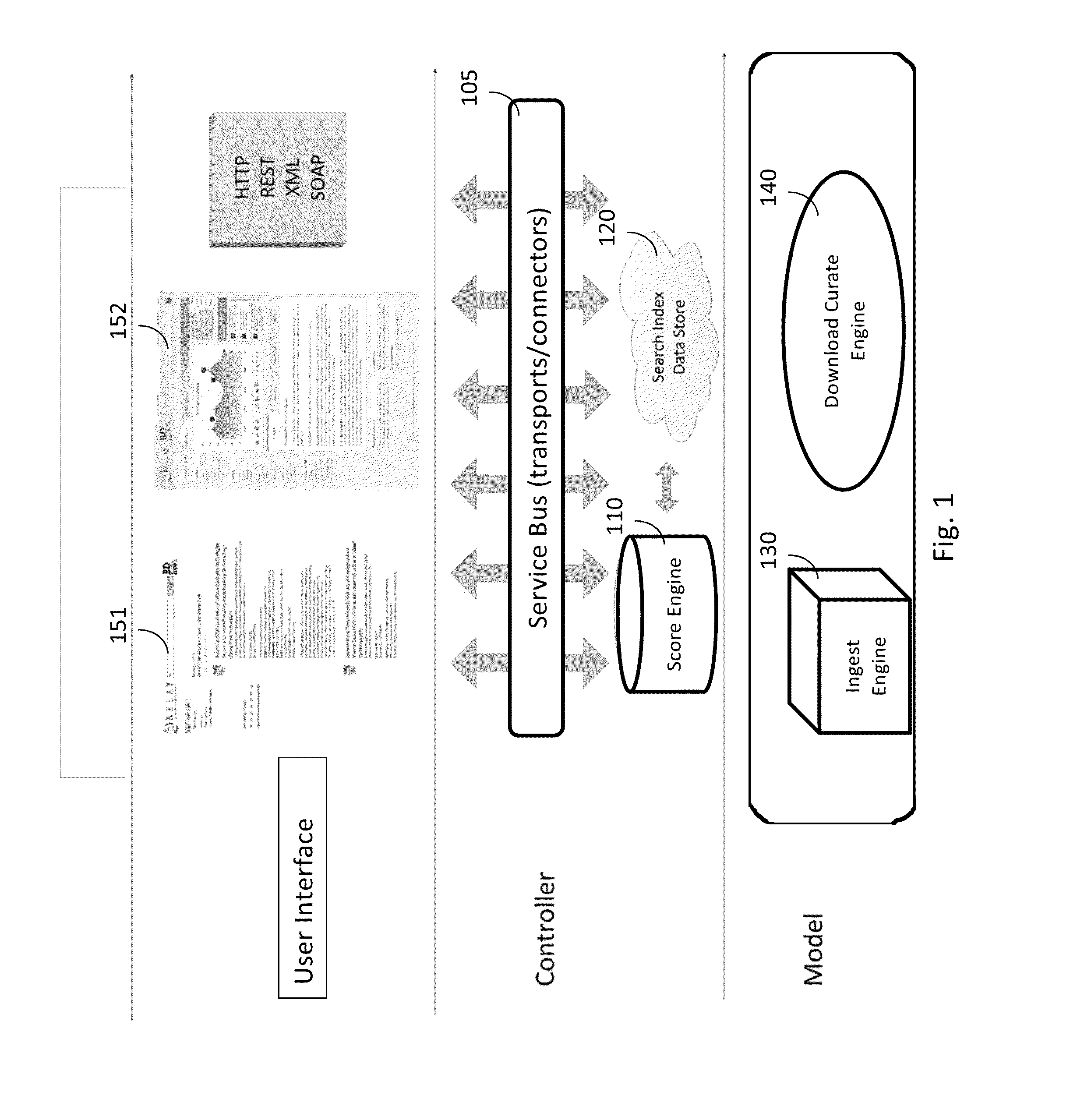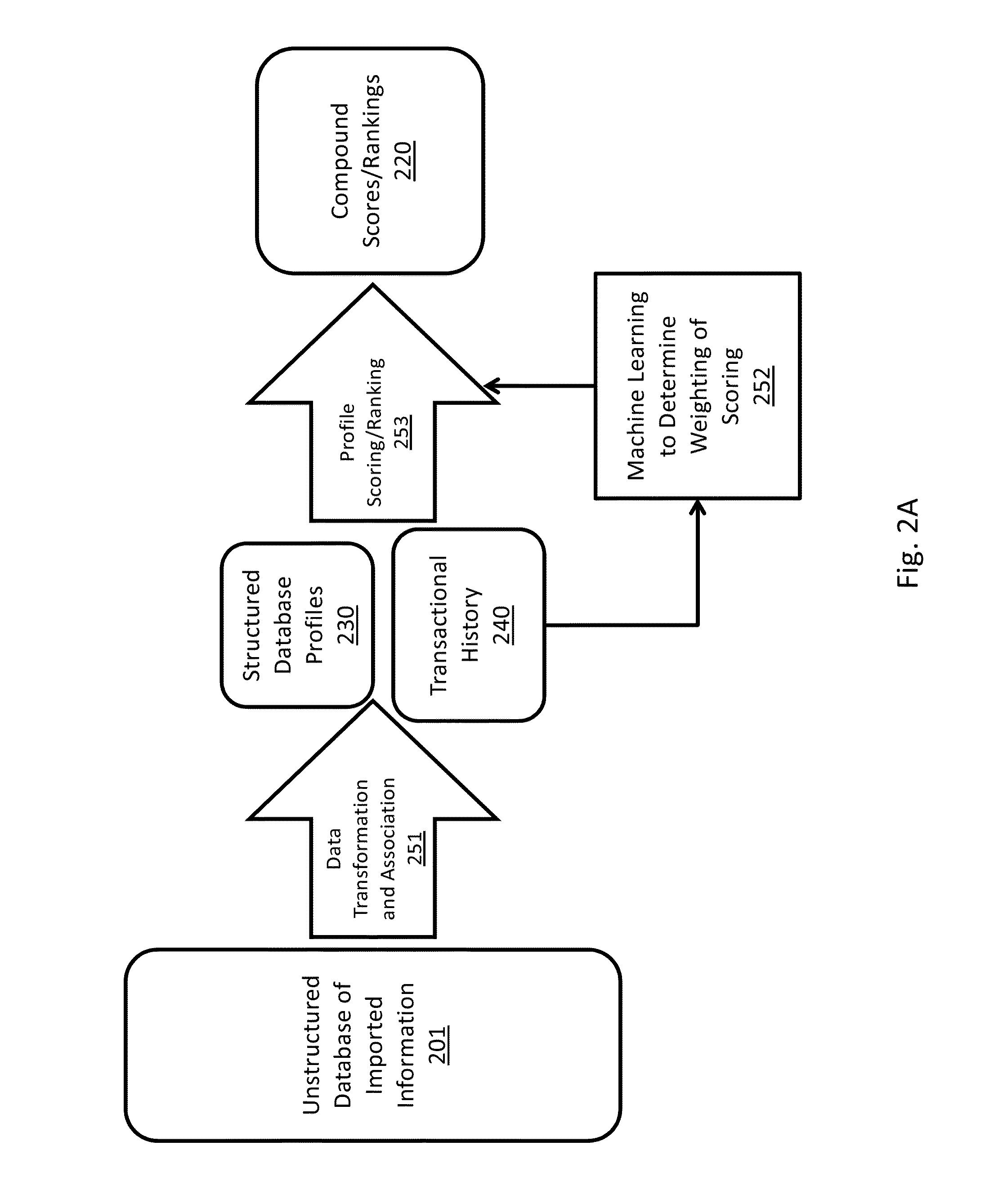Pharmaceutical/life science technology evaluation and scoring
a technology of life science and drug evaluation, applied in the field of data analysis, can solve the problems of poor score, lackluster candidate, and inability to license a patent,
- Summary
- Abstract
- Description
- Claims
- Application Information
AI Technical Summary
Benefits of technology
Problems solved by technology
Method used
Image
Examples
example
[0249]The following case study, which is based on real events, is provided as an example to illustrate how the event of the purchase of Company S assets by Company R could be predicted by the Score, and what happens when, for example, a paper P is published and how it impacts the scoring system in accordance with some embodiments of the present subject matter.
[0250]The paper P references multiple profiles within the Innovation Engine database:[0251]Compound—Compound R and Company S's compound R-like small molecule activators;[0252]Gene / Mechanism—GeneX1, GeneX2, GeneX3, Disease: Type 2 Diabetes;[0253]People (Major)—Dr. X, Dr. Y, and Dr. Z;[0254]Commercial entities / Institutions—Company S, University T, and Medical School M.
[0255]When paper P was published (in 2007), all of these profiles would have been established for several years. Here is how the Score for the compound (Company S's compounds) and mechanism / gene (GeneX1) would have evolved in the Innovation Engine database.
[0256]Whi...
PUM
 Login to View More
Login to View More Abstract
Description
Claims
Application Information
 Login to View More
Login to View More - R&D
- Intellectual Property
- Life Sciences
- Materials
- Tech Scout
- Unparalleled Data Quality
- Higher Quality Content
- 60% Fewer Hallucinations
Browse by: Latest US Patents, China's latest patents, Technical Efficacy Thesaurus, Application Domain, Technology Topic, Popular Technical Reports.
© 2025 PatSnap. All rights reserved.Legal|Privacy policy|Modern Slavery Act Transparency Statement|Sitemap|About US| Contact US: help@patsnap.com



